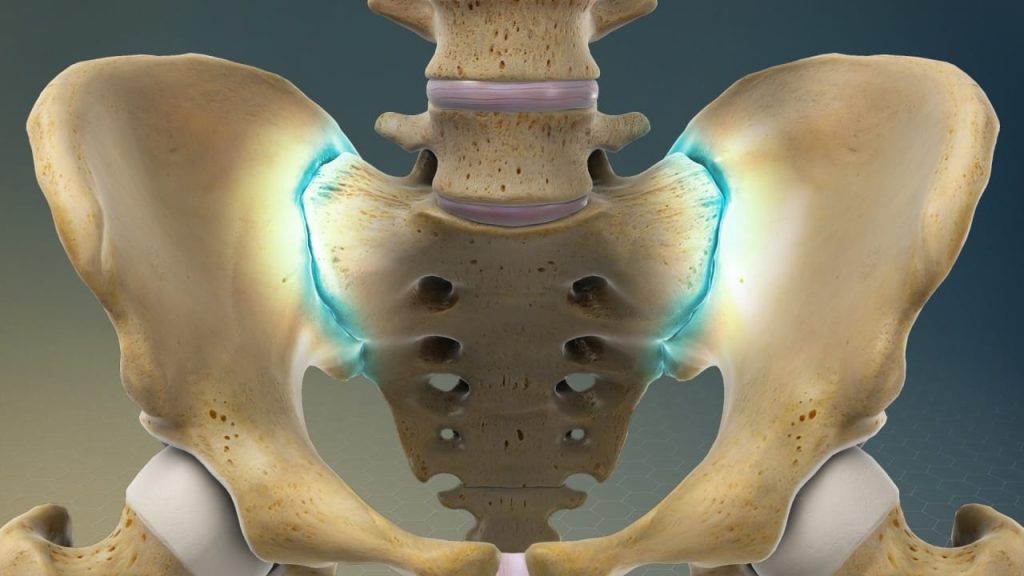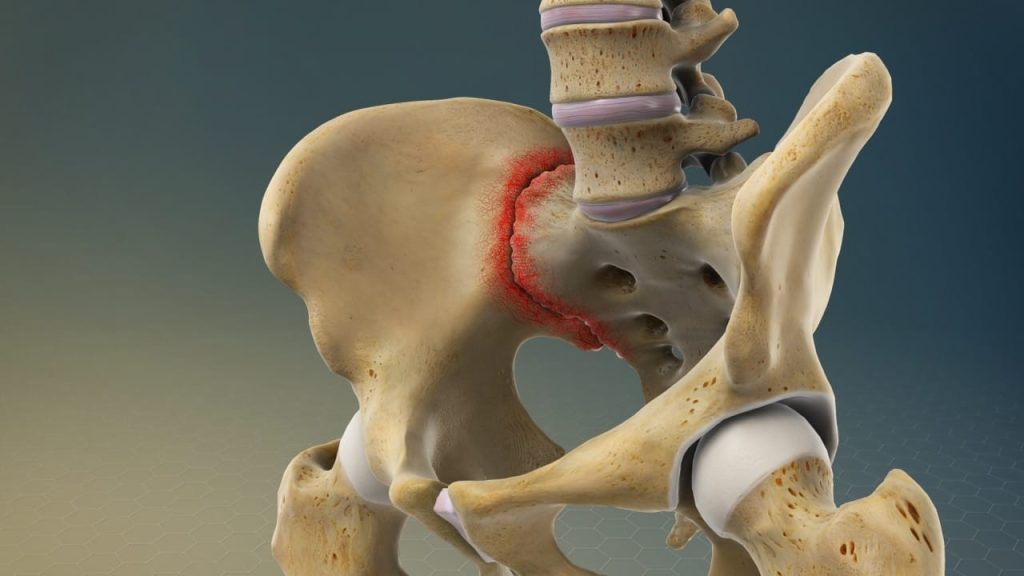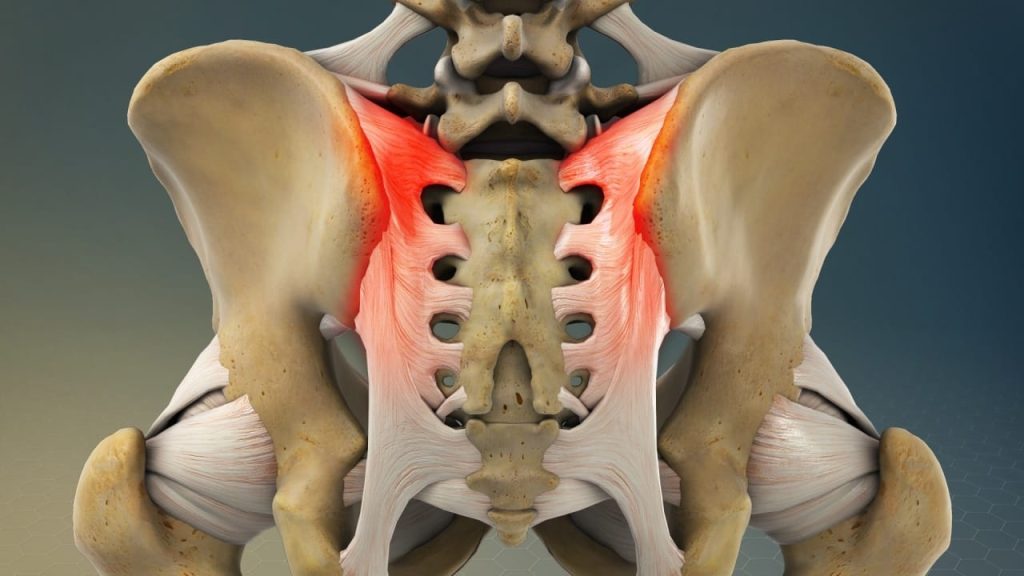Overview
The sacroiliac joints are the joints between the sacrum (triangular bone at the bottom of the spine) and the iliac bones, which are connected by strong ligaments. They are essential for effectively transmitting the weight of most of the body to the pelvis and legs. Movement of the sacroiliac joints is restricted. Small movements at these joints help with shock absorption and forward/backward bending. Dysfunction in the sacroiliac joint is a common cause of low back and/or leg pain.
Causes
Sacroiliac joint syndrome or sacroiliac joint dysfunction refers to pain in the sacroiliac joint that is caused by abnormal movement in the sacroiliac joint, either too much movement (hypermobility or instability) or too little movement (hypomobility or fixation).
Too much movement of the sacroiliac joint is mainly of traumatic origin. Injury to the supporting ligaments may occur by a torsion or high impact injury such as an automobile accident or secondary to acute trauma involving prolonged lifting and bending, sudden heavy lifting and fall onto a buttock.
Too little movement of the sacroiliac joint is an intra-articular disease in which the joint locks due to wearing down with age or joint degeneration. Hypomobility of this kind can also occur in inflammatory disorders such as ankylosing spondylitis, sacroiliitis and rheumatoid arthritis.
Furthermore, fusion of the lumbar spine to the sacrum as well as fusion of multiple segments may lead to sacroiliac joint disease as well.
Symptoms
Sacroiliac joint dysfunction is a common cause of low back and/or leg pain. It can be particularly difficult to differentiate this pain from radiating leg pain caused by a lumbar disc herniation as they can feel quite similar. Additionally, common symptoms include buttock pain, groin pain, hip pain and pain in the thigh. Symptoms also worsen with prolonged or sustained positions such as sitting, standing and lying, stair climbing and rising from a seated position. Usually, sacroiliac joint pain is felt only on one side, but may occur on both sides.
Treatment
Treatment for the sacroiliac joint pain is mostly nonsurgical and is focused on reducing inflammation and pain and restoring normal motion in the joint.
Generally, the treatment involves analgesic/anti-inflammatory medications, physical therapy, manual therapy and injections into the sacroiliac joint or sacroiliac joint blocks.
If the patient has a positive response to the sacroiliac joint injections after having failed nonoperative care, the next treatment option is often radiofrequency denervation or rhizotomy.
For the rare cases in which the patient experiences chronic, severe pain originating in the sacroiliac joint, surgery to fuse und stabilize the joint may be an option.
References
- Kraemer J., Hasenbring M., Kraemer R., Taub E., Theodoridis T., Wilke H.J: Intervertebral Disc Diseases: Causes, Diagnosis, Treatment and Prophylaxis. Thieme 2009.
- McGrath. Clinical considerations of sacroiliac joint anatomy: a review of function, motion and pain. Journal of Osteopathic Medicine 2004; 7(1): 16-24.
- Hansen H., Helm S. Sacroiliac joint pain and dysfunction. Current opinion. Journal of Pain Physician 2003; 6 (2): 179-189.
- Rashbaum R., Ohnmeiss D., Lindley E., Kitchel S., Patel V.: Sacroiliac joint pain and its treatment. Narrative review. Journal of Clinical Spine Surgery 2016; 29 (2): 43-48.
- Baber Z., Erdec M.: Failed Back Surgery Syndrome: Current Perspectives. Journal of Pain Research 2016; 9: 979-987.



